
Last spring, on the occasion of its 25th anniversary, VMware reached out to the Computer History Museum with a proposal to create the VMware Founders Collection. The resulting collaboration preserves the history of one of Silicon Valley’s most innovative and successful companies. I’m the archivist tasked with building it from scratch.
The VM in VMware stands for “virtual machine.” When presented with this assignment, I was a bit stumped. What artifacts can we collect for a company whose product is virtual?
VMware’s history is one of the most compelling Silicon Valley stories I’ve ever heard. It begins with smart people trying to solve difficult problems. In the late 1990s, one of those problems was that computers could only run one operating system. In some cases, individual business applications took up an entire machine, while utilizing less than 20% of the machine’s capability. The x86 virtualization program developed by VMware’s founding technologists Mendel Rosenblum, Scott Devine, Ellen Wang, and Edouard Bugnion, enabled a single machine to be segmented into several virtual machines, each with its own operating system.
Once virtualized, computers could handle multiple functions safely and securely. The savings in hardware, space, electricity, and human resources were incredible.
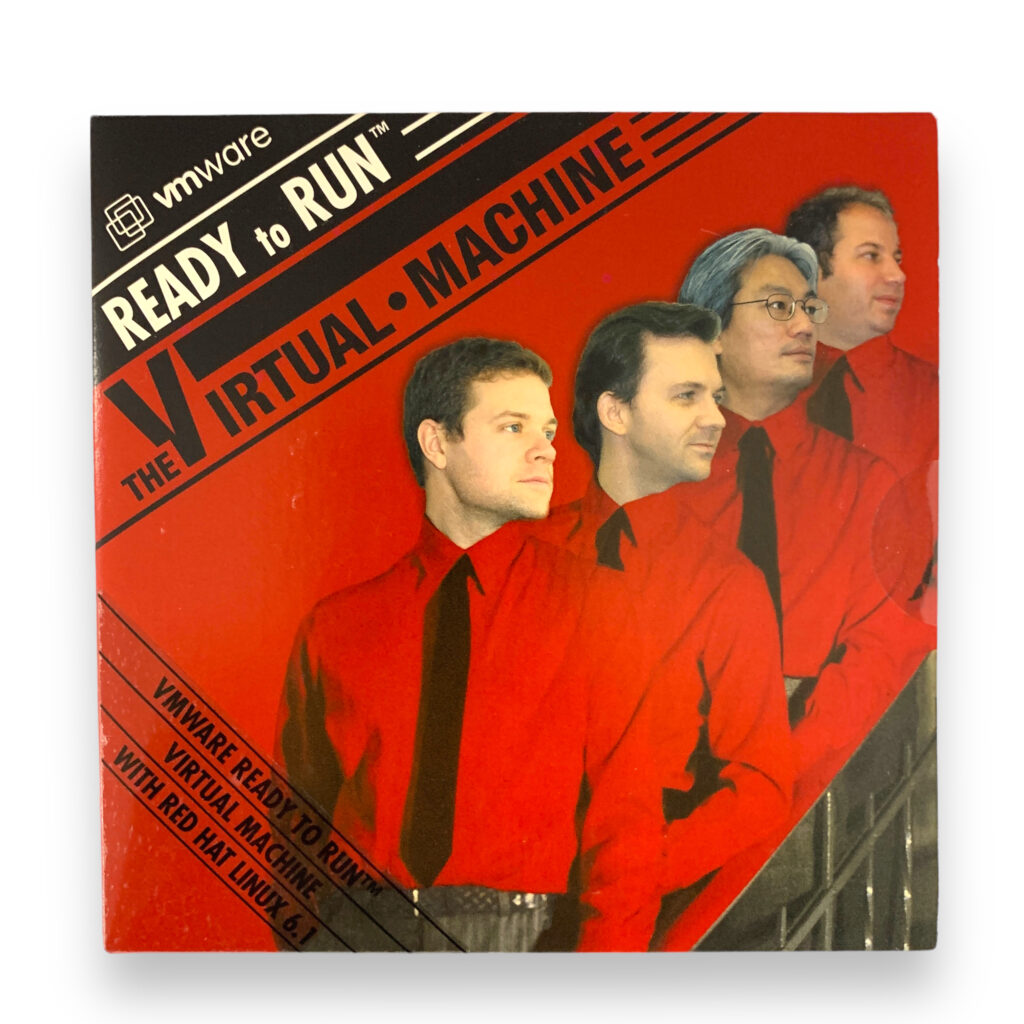
The front cover of VMware Ready to Run Virtual Machine software CDs with a photograph of company founders, 2000. Catalog number 102801286.
Thus was VMware’s vision born: to “virtualize everything.” It was a pretty easy sell to enterprises in the early 2000s. In just a few years, VMware had succeeded in virtualizing individual computers and turned its attention to virtualizing networks, another formidable challenge. Under the leadership of CEO Diane Greene, VMware built its smart team into a company with some of the best engineers in the business. Over the course of several years, VMware’s innovators developed effective and reliable ways to virtualize all kinds of networks.
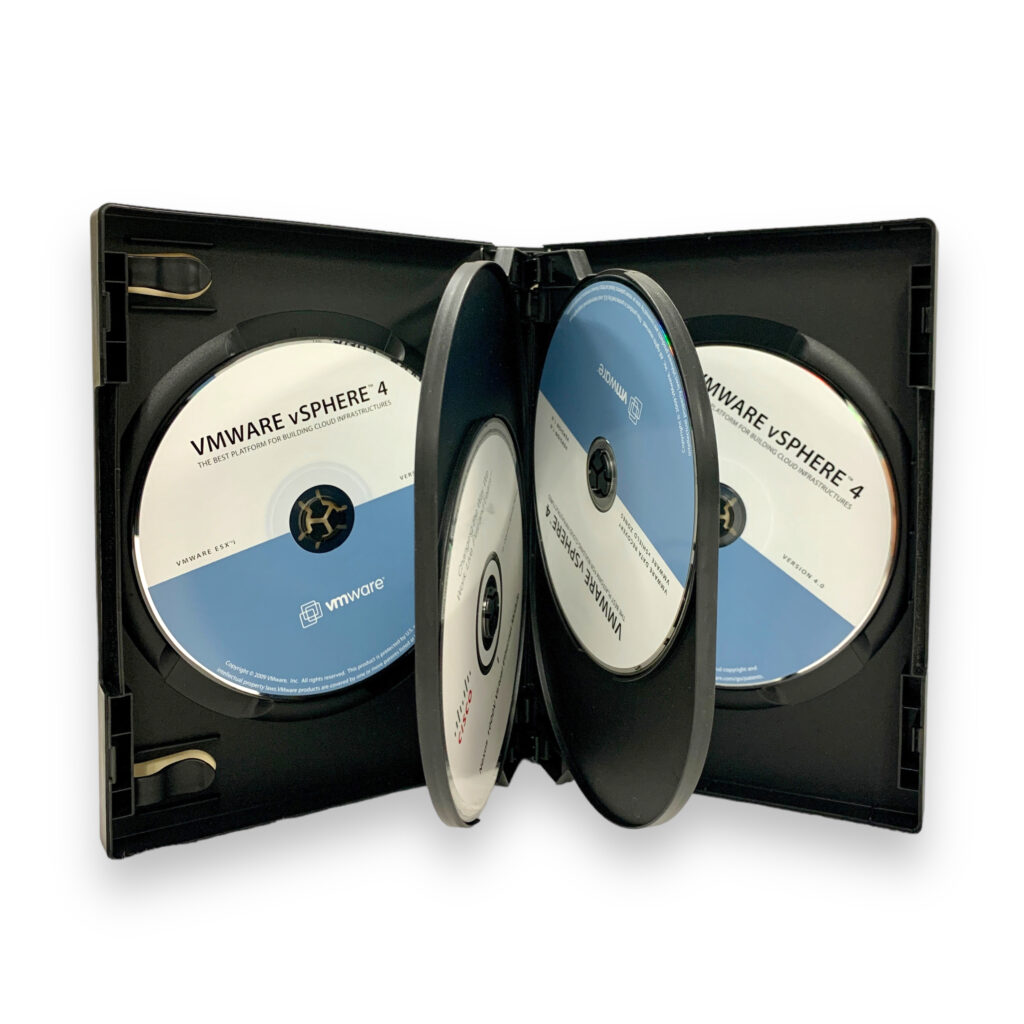
Installation discs for VMware vSphere 4 and 1 installation disc for Cisco Nexus 1000V Virtual Ethernet Module for VMware vSphere 4 from 2009. Catalog number 102801283.
Virtualization at many levels and in many different areas of computing has enabled the IT revolution in which we are currently living. It is, in fact, the very basis of cloud computing.
But still, as an archivist, I had to ask, “What are the things we can collect? What can we put in our museum to tell this story?”
Most long-lived companies develop a very strong corporate culture that’s reflected in the material culture they produce, like marketing collateral, T-shirts, awards, etc. (SWAG, anyone?) We collect these things because they encapsulate the spirit of the company and the uniqueness of the innovation environment.
For VMware, the spirit of innovation is found in the form of a block. The earliest concept of the virtual machine was as a hardware block (a CPU) divided into virtual blocks (virtual machines). Employees receive glass blocks for their 4th, 8th, and 12th anniversaries. We’ve collected these, along with boxes and discs of VMware’s early products.
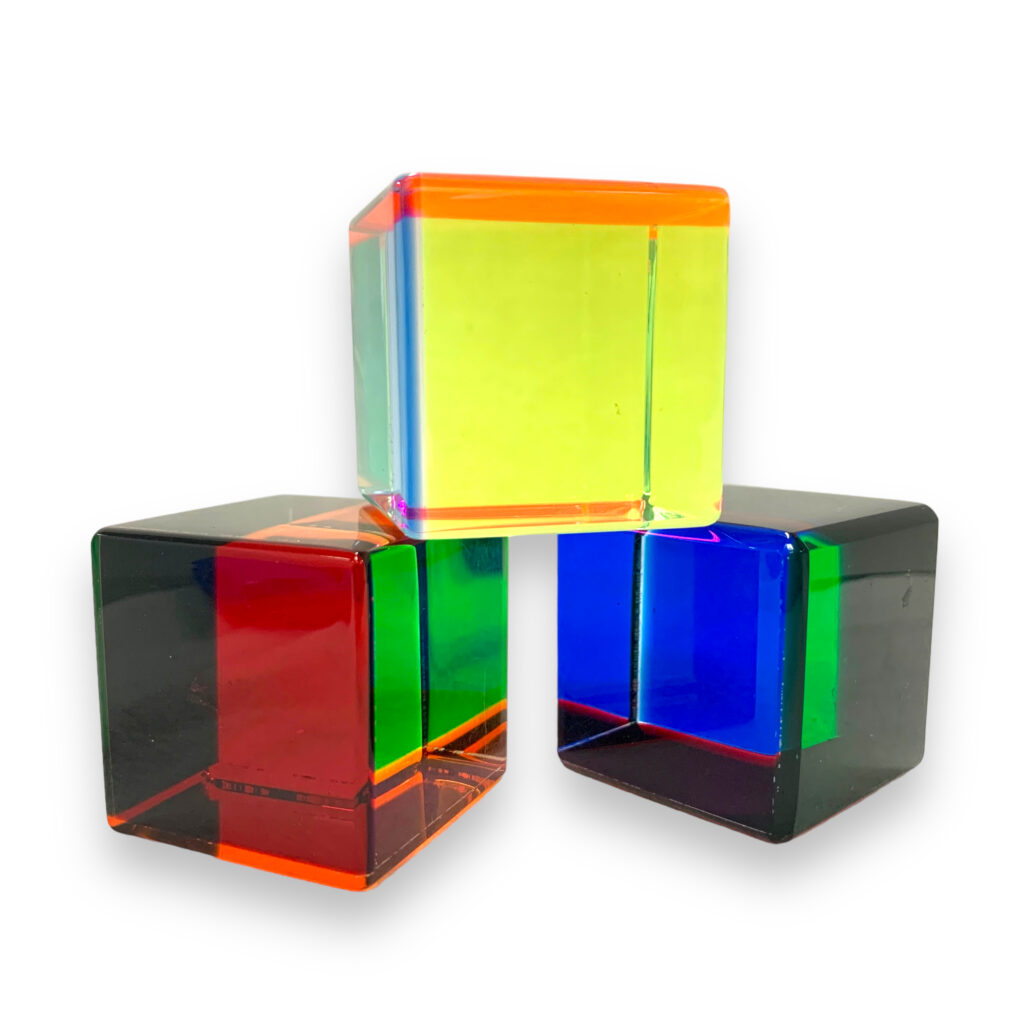
Glass cubes awarded to employees on their 4th anniversary with VMware. Catalog number 102801292.
VMware’s creative and passionate spirit can be found in T-shirts featuring cheeky taglines and images; digital materials documenting VMware employee activities; and a crew of turtles who call the pond in VMware’s Palo Alto campus their home. We aren’t collecting the turtles, of course, but we will hold on to Rosie’s Turtle Tales, a book chronicling their adventures, along with representative sample of VMware SWAG.
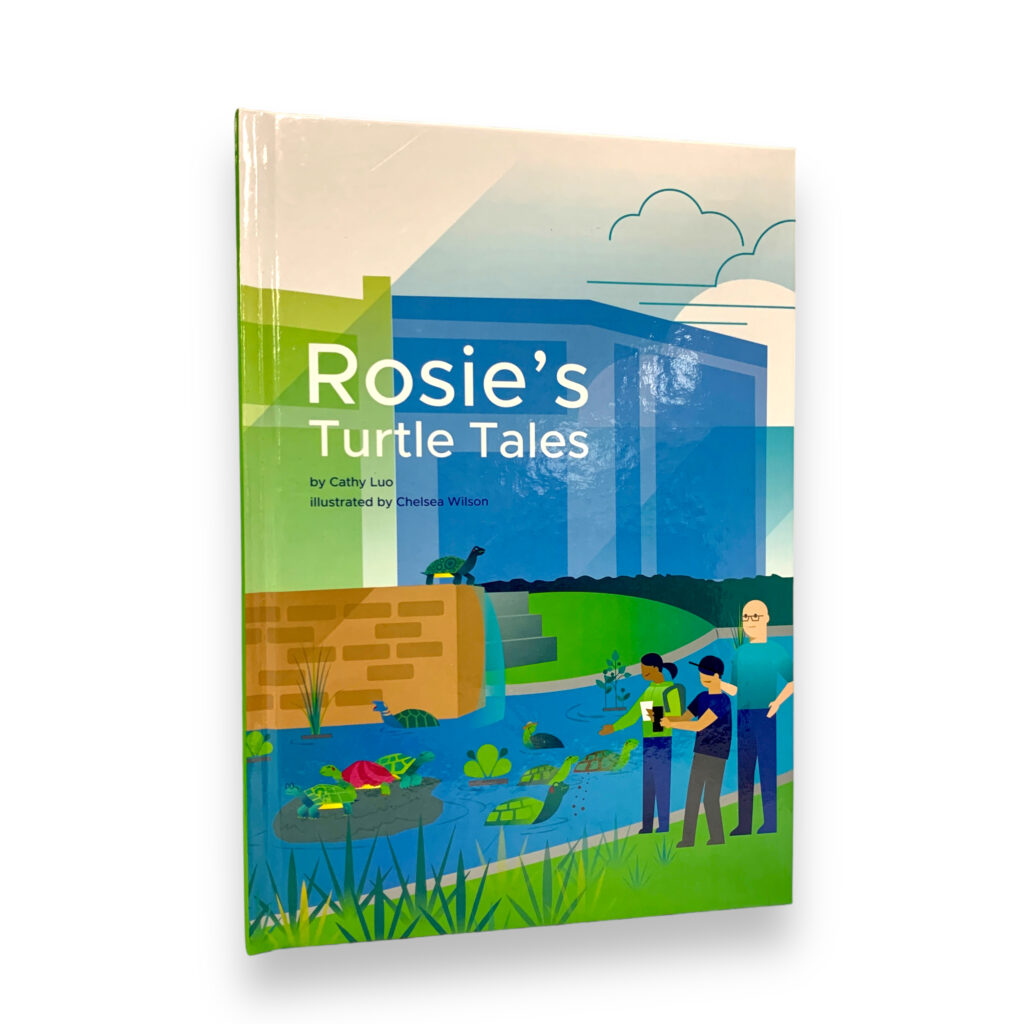
Hardback book titled Rosie's Turtle Tales, by Cathy Luo, illustrated by Chelsea Wilson, 2019. Catalog number 102801296.
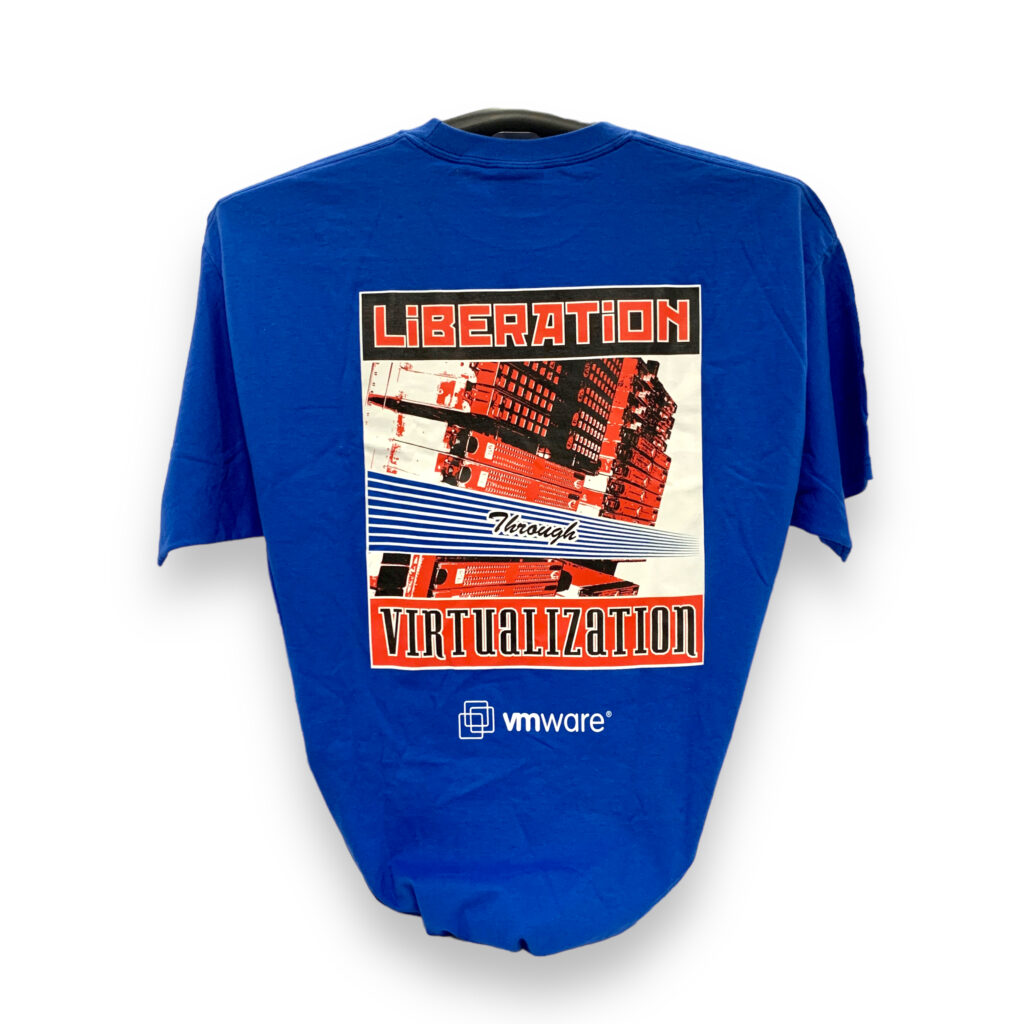
T-shirt designed by VMware with a graphic design showing network components and that reads "Liberation Through Virtualization." Catalog number 102801297.
All of these things are fun and interesting, but they only tell part of the story. The real manifestation of the culture is in the people who have made VMware’s history through their work. We must collect their memories too.
I’ve had the privilege to interview 21 current and former VMware employees from all areas of the company and all regions of the world. I’ve learned a lot about VMware’s groundbreaking innovations, their worldwide impact, and the culture that made it all possible.
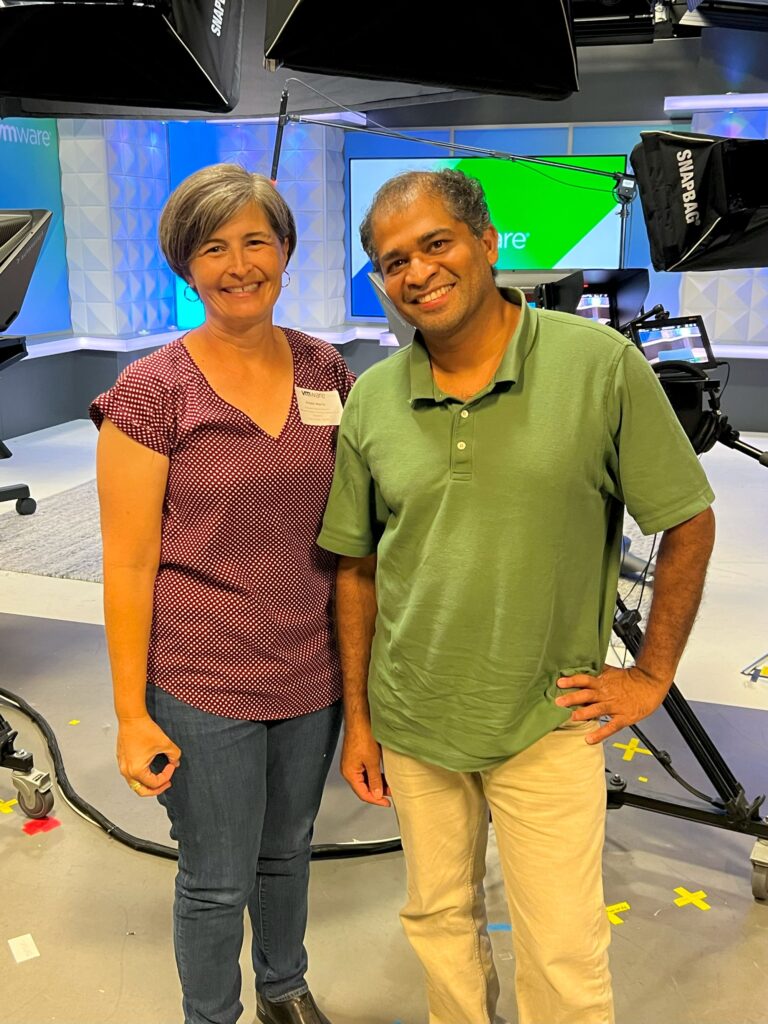
The author with Ganesh Venkitachalam, VP of Engineering & Product Management, Cloud Storage and Data Protection, VMware for his interview on September 12, 2023.
Ganesh Venkitachalam on practical innovation.
Ray O'Farrell on respect for engineers.
Pam Cass on making a difference.
Chris Wolf on how virtualization changed the world.
We invite you to explore the VMware Founders Collection here, including my interviews with VMware employees. More material will be added in the coming months. And CHM curators will be conducting full-length oral history interviews with some of VMware’s most important contributors.
It has been a real pleasure for me to get to know VMware—its technologies, its culture, and most of all its people around the globe. I would like to thank Amy Plunkett, Director—Global Communications, for being my guide and partner in building the VMware Founders Collection.
See more VMware artifacts in the VMware Founders Collection. If you have materials (or memories) related to VMware, please reach out to us at [email protected].
Preserving collections like these would not be possible without the generous support of people like you who care deeply about computing history. Please consider making a donation.